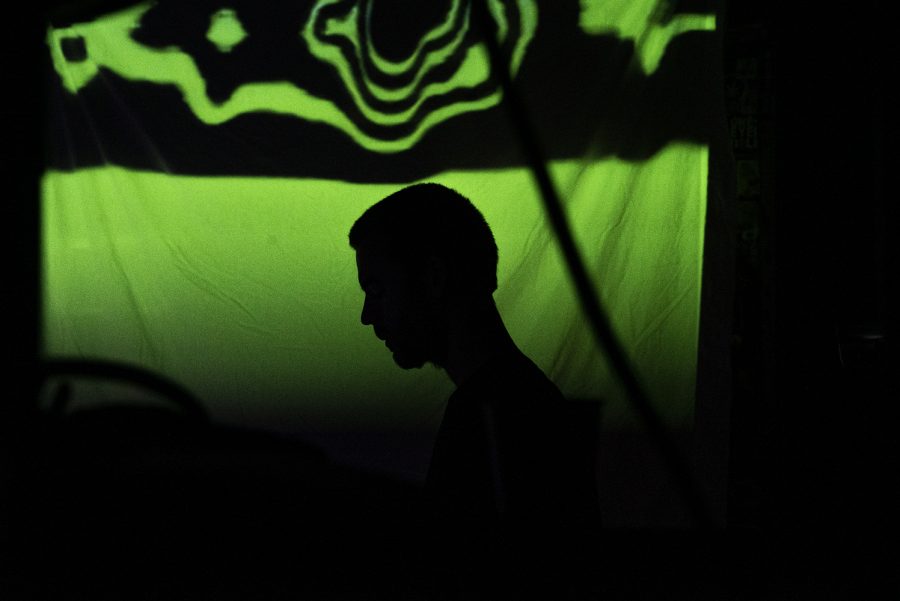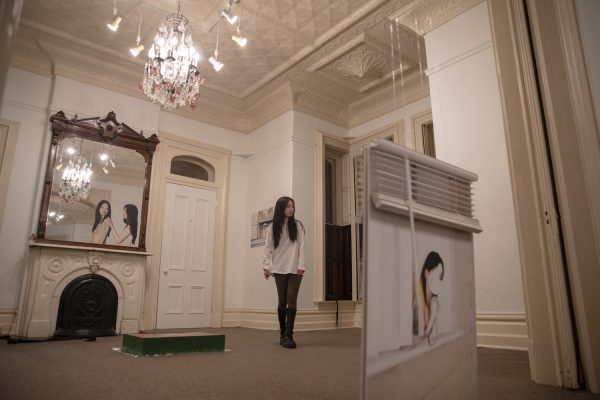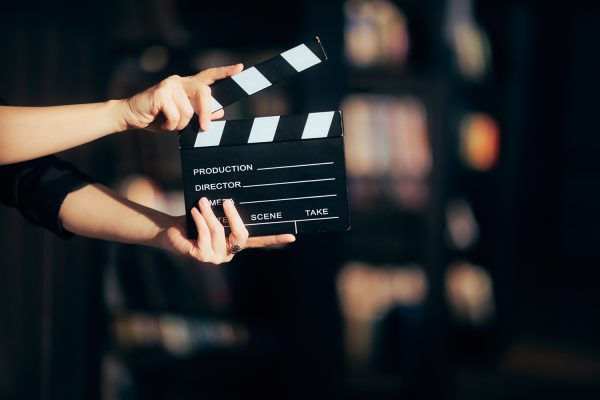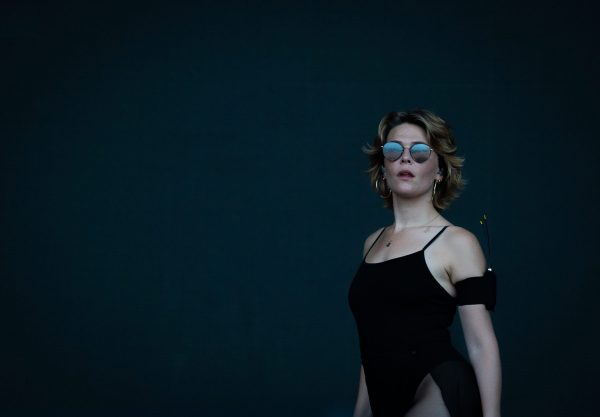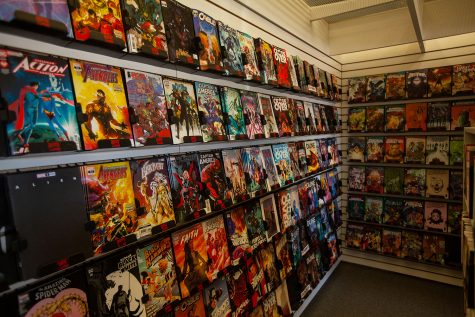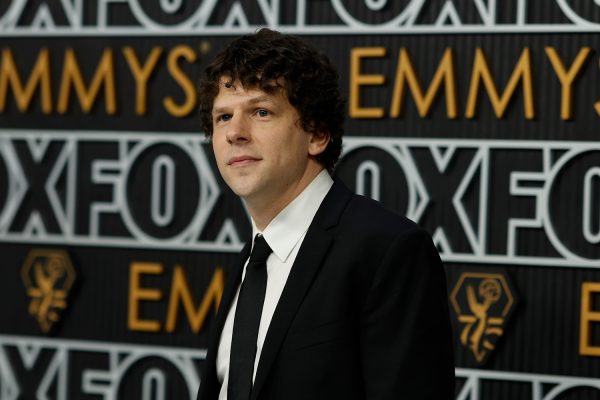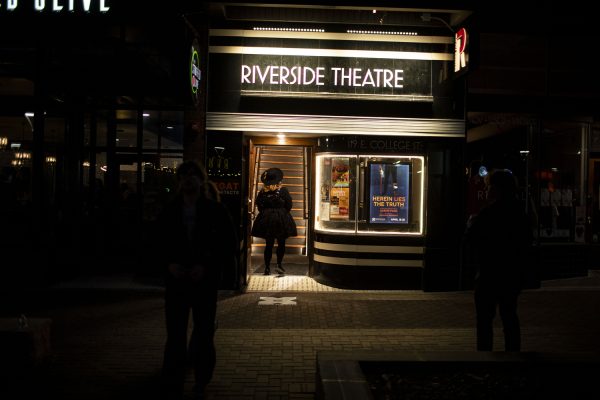Exploring realms and discussing the process: A recap of Witching Hour
The Englert and Little Village held their annual Witching Hour Festival last weekend, and The Daily Iowan Arts Staff has the recap of various events over the weekend
Shredders performs at Gabes in downtown Iowa City as the closer for Witching Hour on Nov. 2. Shredders is the new rap project from Doomtree members P.OS, Sims, Lazerbeak, and Paper Tiger.
November 3, 2019
Kerry Howley
The annual Witching Hour Festival kicked off with the upcoming work and words of the University of Iowa’s Nonfiction Writing Program’s Assistant Professor Kerry Howley.
Inspired by the political tumult spurred by whistleblowers and the hidden intricacies of how people are surveilled in our daily lives, Howley shared excerpts from Bottoms Up and the Devil Laughs: Notes on the American Surveillance State.
Playing with such heavily political, and at times, frightening ideas, Howley’s energy had a comedic balance to it. The title itself had the audience chuckling, as it took a quote from a viral video from 2014, which showed a woman proclaiming why Monster energy drinks are the work of the devil. While some may see the video simply as a religious rant, Howley took a different view.
“What the lady in the video represents is the existence of doubt,” said Howley.
According to Howley, the act of whistleblowing takes a level of courage and a clear vision to speak. The people who perform these society-changing acts tend to be dearly attached to institutions, and they stick to a fierce and fundamental moral code.
“Recognizing the world you exist in is one of the most gratifying things you can experience as a reader,” said Howley.
The book currently has no set publication date.
Rachel Grimes: The Way Forward
A mixture of a play, a movie, and a documentary, The Way Forth featured a small ensemble of instruments set before a projector screen in the Englert Theater, later joined by a full choir. A full multimedia experience, the film itself played no actual sounds. The images on-screen were primarily accompanied by the instruments, singers, and voice actors on stage, many of them sharing multiple roles.
The Way Forth weaved together the past and the present with its visuals and music, trying to reconcile feelings of nostalgia for a home with its sometimes terrifying past. The story grounded itself in the rural towns near the Kentucky River, a strong thread to hold onto in the ever-changing storyline of the show.
Women played a central role throughout, and the show spent large amounts of time with each individual woman to show her successes as well as her trials. The plights of people of color were also featured during the showing, with sections dedicated in part to struggles against slavery, racism, and colonialism.
Over the course of an hour, the audience was taken on a journey through time, and all the good and the bad that comes with the past.
Comedy Showcase
Five comedians performed at the Mill for the first night of the Witching Hour.
Aloe Mean started out the night, stunting a casual outfit with a snapback, and introduced himself to the audience.
“My name is Aloe, like the plant. Like Aloe Vera,” Mean said, causing the crowd to chuckle.
A majority of Mean’s jokes dealt with sex, race, and his body. Mean won over the crowd as a strong opening act.
Nancy Persoon took the stage next, wearing a black witch hat with an orange feathered rim, and a leather jacket over a long orange ruffled shirt. Peerson’s jokes surrounded topics such as gay bars and their own non-binary identity.
The next performer of the night was Meredith Kachel. Kachel’s act poked fun at rich people’s homes, and she walked the audience through what to do for five days in a rich person’s house.
Following Kachel was Arish Singh. Singh wore a button up over a T-shirt, jeans, and a maroon turban. He made jokes surrounding political issues such as ISIS, 9/11, and Bernie Sanders.
“I’m tired of Bernie Sanders. I’m tired of him yelling at me. I wish he would just spit in my mouth already,” Singh said.
The last performer of the night was Cameron Gillette, a former blues artist who now uses his bisexuality to make jokes at his own expense.
To end the night, Gillette asked the audience, “What did the butt say to the boobs?”
After the audience replied, Gillette dropped the microphone to his side and looked disappointed.
“I didn’t come up with a punchline to this joke. This is a disaster,” he said.
He then led into a bit about time travel, and if it exists in 20 years, he will go back to the day prior to the show and write a punchline, then tape it under the front table. An audience member proceeded to reach under the table and pull out an envelope. In the envelope was a piece of paper that was supposed to be the punchline, but instead, it read, “everyone in the future is dead.”
Obnox
Obnox roared into Gabe’s on the first night of Iowa City’s Witching Hour festival. With a red light shining on the lead singer, an orange flair donning the drums, and blue streak shining on the DG, the group welcomed the audience. A thunderous roar of drums and instruments shattered the atmosphere. The lead singer brought a tambourine to his ear. Two songs in, Obnox buffered the performance to speak about a post-Halloween fiasco, whether the blues of a candy-less morning had diminished the mood of Gabe’s audience. They woo and scream “yeah,” indicating that October’s demise hadn’t extinguished their ecstasy, and Obnox continued.
Practical Magic: Transforming Reality
With a title like “Practical Magic: Transforming Reality,” one may have no idea what to expect upon entering such a workshop. I wasn’t sure if there was going to be spells casted on audience members, hypnosis, or witchcraft. Yet, I left with a sense of calm — a transformed reality.
Daniel Boscaljon sat at the front of the conference room in Merge, with a cup of six espresso shots in his hand. Boscaljon wore a blue tie with a classy black button-up rolled up to his elbows — just high enough to show off his tattoo sleeves.
To begin the workshop, Boscaljon jumped right in. The first high point that he touched on was attention. He pointed out the difference between paying attention at something, which is only grazing the idea, and paying attention to something, which is developing and understanding the story and full potential, despite the many distractions the world puts out.
“Reality does not want you to pay attention,” said Boscaljon.
According to Boscalijon, the second step to transforming reality is intuition, which highlights the three patterns of intuition, including personal, environmental, and theological.
“Trust your intuition. Invite yourself to think about how you can make the world a more beautiful place,” Boscaljon said.
The third and final step of transforming reality is intention. Boscaljon talked about how intentions can change the outcome of one’s future. If you have good intentions, you’ll have a more positive future based off of what and how you follow up with those intentions.
Boscaljon closed by connecting the three steps of practical magic.
“Part of the joy and magic and wonder of being human is to not know everything,” Boscaljon said.
The Mirror/The Reaping
Part museum, part dance performance, Christopher Rasheem-McMillan created a disturbing and partially interactive experience with his show, The Reaping 4.6.
The show took place in Public Space One, utilizing the downstairs portion and the four almost equally-sized rooms in the house. From there, the space was further split: on the left half, viewers and books and messages about the black experience in the United States. On the right half, two dancers, Rasheem-McMillan and a woman unnamed by the program, performing under black masks.
The rooms of the right half projected videos displaying racism in college fraternities playing in a loop while an audio loop of a few of the white supremacists shown in the video played, chanting racist epithets. Both dancers stared at the videos playing, Rasheem-McMillan even joining in on the chants, sometimes in crying song and sometimes in a joyful chant.
The female dancer remained wordless, only laughing at the chants from Rasheem-McMillan or joining in on his laughter.
Rasheem-McMillan would occasionally speak directly to the audience, reminding them that it was only art and that real black bodies lie in the street every day.
Both performers spent large amounts of time rithing on the floor in pain and in defeat as the world seemed to offer little care for the reality of the black experience in the U.S.
I Got Life, And I Got Freedom: Exploring Personal & Social Change Through the Music of Nina Simone
Sharon Udoh, who performed as Counterfeit Madison, played an intimate and powerful solo concert at the Englert Theatre.
The Columbus, Ohio, native’s event, I Got Life, And I Got Freedom: Exploring Personal & Social Change Through the Music of Nina Simone, focused Udoh’s life-changing introduction to Simone’s music at 29 years-old, and the identity revolutions that followed. The event had an air of electricity that took me by surprise. The performance didn’t feel as if I was watching an artist tribute band. The evening felt more like an exploration of identity: Udoh’s, Simone’s, and the audience’s.
Simone was famous for her music and political voice throughout the Civil Rights Movement. Udoh explained how Simone’s music, even now, carries weight in our society and hopes it will cause change. Udoh played many of Simone’s most iconic songs, with a few of her own originals.
Each song raised chilling goosebumps, but the most sensational moment of the night was Simone’s famous song, “Mississippi Goddam.”
Udoh melted the audience’s heart with her bright and bubbly smile, and would break it just as fast with conversations about love, injustice, and brutality. Udoh spoke about ‘ugly and hard’ changes that need to happen in our society for people of color to not be the victim of people’s hate and insecurities.
The concert was truly a memorable experience, with Udoh channeling not just Simone’s sound, but also her essence.
Julio Torres
Julio Torres was greeted with a parade of cheers and excitement by the patrons of the Englert Theater on Saturday night.
Torres, once a writer on Saturday Night Live and co-creator of the HBO comedy series Los Espookys, lended his comedic anecdotes for Iowa City. The Salvadoran comedian brought some hilarious pieces of humor, noting politician Beto O’Rourke’s exit from the presidential bid, then chanting about his own feminine attributes.
Torres later moved to questioning the plastic creations of Toy Story, mentioning that it is possible that the toys find their child owners to be their god. Reading a script from his smartphone, he also told a story revolving around a crow who was an extra in Madonna’s music video, “Frozen.”
Torres concluded his stand up by asking the audience for the most Iowa-based advice they could give him. Someone from the audience yelled “Eat the corn” only for another to exoticize the statement to, “Lick the corn,” a phrase that Torres said he’ll take with him once he returns to New York.
Shredders and Limited Infrared
As Witching Hour ticked to its end, two events at Gabe’s shared striking differences in terms of medium and tone.
Limited Infrared, an electronic project based in Iowa City, brought an abstract, psychedelic vibe to the bar. Brendan Hanks, the artist behind the collaboration, DJ’ed behind his Macbook as patrons poured to the front of the stage.
Green and red colors interconnected with each other in the background projection. With a male and female dancer, their bodies were reflected on projection, with the visuals moving along the dancers’ bodies.
The projection steadily became more vague, almost appearing like rippling water tarnished with colors. Around the end, the two dancers were standing back-to-back. Suddenly, they placed their heads on each other’s shoulders.
Although the duo remained synchronized throughout the whole show, the last scene really showcased how they shared the same energy.
Transitioning to the next act, Hanks said, “We’re gonna make the stage not look like an episode of Dexter.” The stage suddenly became bare, the lighting fuschia-colored. Shredders was ready to take on the stage.
Consisting of two rappers, P.O.S and Sims, and their two producers, Lazerbeak and Paper Tiger, the whole group playfully worked off of each other, energy never left their bodies.
Both rappers jumped around the stage when reaching their song “Ayeyayaya.” However, Shredders’ greatest strength was their instrumentals, with their producers incorporating heavy bass drops reminiscent of Dubstep.
A personal highlight was when P.O.S gave a shout out to Cedar Falls, my own hometown. “It’s a great place… if you like ghosts,” he said in a deep voice.
Shredders is clearly fueled by the groups comradery and passion, demonsted when P.O.S. stopped what he was doing and turned his back to his band.
“I love you, each one of you,” he said, looking at each member.
Near the end of the show, P.O.S. shows off his Triforce tattoo to the crowd, showcasing his love for Legend of Zelda.
As they moved to the song “Xanthrax,” the two rappers drove home this passion, repeating, “Reset game, new quest.”




